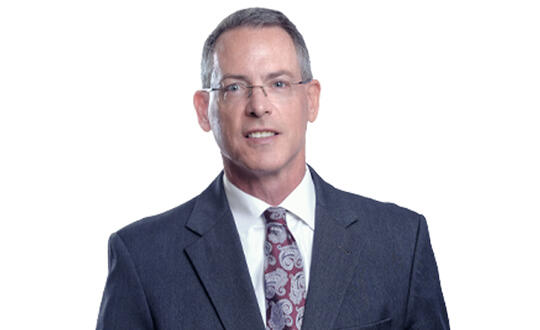Getting to Know Geoff Curtin, Ph.D.
Jan 27 2025
For some people, “Retirement” just means moving on to the next adventure.
Such is the case for Dr. Geoff Curtin. In 2021, after nearly 25 years at Reynolds American, the veteran scientist and regulatory researcher decided to retire and move to Womble Bond Dickinson. At Womble, he has found a comfortable new home, working with many of the same colleagues from his Reynolds days.
You have an extensive background in behavioral and regulatory science. What did you do before coming to Womble?
I received my doctorate from Texas A&M in 1989, and then accepted a post-doctoral fellowship through Duke University Medical Center. Reynolds had sponsored the fellowship, and this represented my first interaction with the company. After completing my fellowship, I spent four years on the faculty at MD Anderson Cancer Center, conducting research into the underlying causes of chronic disease, including cancer. In 1997, I returned to Reynolds to continue that research, focusing on tobacco smoke.
In 2009, I transferred to the newly formed Regulatory Group at Reynolds and was eventually asked to oversee research on the population health impact of tobacco use. This area of research was expected to be a central component for any regulatory submissions to the FDA. I helped create the Behavioral Research Group and led that group for more than a decade.
One of the reasons that I moved to Womble was because of the firm’s close relationship with Reynolds – a relationship that goes back over 100 years. Several people that I currently work with at Womble consulted with Reynolds during my time leading the Behavioral Research Group. Thus, I was well aware of the Regulatory Science Group at Womble and, when it was time to leave Reynolds, I joined that group.
How did you get interested in these particular areas of interest?
My interest has largely been driven by the requirements for the regulatory submissions themselves. Simply stated, the research that the Womble group assists with is intended to address two key questions: (1) the individual risks associated with the use of tobacco products, and the potential for tobacco harm reduction with lower-risk alternative products; and (2) the population health impact associated with the use of tobacco products, based on who is going to use the products and how those products are going to be used. With regard to the latter, a current cigarette smoker switching completely to an alternative tobacco product that presents less risk would be expected to benefit the health of the population overall, while the use of any tobacco product by a nonuser of tobacco would likely lead to harm.
The Regulatory Science Group at Womble assists Reynolds primarily in the areas of survey research and population modeling, as well as reviews and summarizes emerging literature from Public Health and Tobacco Control researchers.
"My interest has largely been driven by the requirements for the regulatory submissions themselves."
What do you do as part of the Medical & Scientific Solutions Team? How do you apply your skills and knowledge to work for clients?
The work of the Regulatory Science Group at Womble is similar to the research that I oversaw while working at Reynolds. Prior to joining Womble, I was leading research programs that assessed the population health impact of tobacco use behaviors – and that remains the focus of the Womble group. We assist, as needed, through the entire regulatory submission process, including when additional guidance is provided by the FDA and to address new products developed by Reynolds.
When you first joined Womble, what was the biggest challenge of working at a law firm? And how did you adjust?
There wasn’t much of a challenge in moving from Reynolds to Womble, likely because Womble already had an established Regulatory Science Group – which is unusual for a law firm. Given that I had been working with that group during my time at Reynolds, it was an easy transition. Since joining Womble, I have had strong support from the firm – that is, Womble has provided me with a great opportunity to continue to be successful as a researcher.
"There wasn’t much of a challenge in moving from Reynolds to Womble, likely because Womble already had an established Regulatory Science Group – which is unusual for a law firm."
Tell us a bit about your life outside of the office. What do you like to do when you aren’t at work?
I mostly spend time focused on my two grown daughters. My oldest daughter lives with her husband and my only grandson in Southern Georgia, so spending time with them often presents a bit of a challenge. My youngest daughter recently moved from Raleigh, where she finished college, back to Winston-Salem – so now we have more opportunities to spend time together. I have also been spending more time with my brothers, who both live in Houston where we were raised. As we all reach retirement age, it has presented more opportunities to get together.
I also have three dogs that I look after, which mean I often go on eight walks a day. On the positive side, I use this time to organize my thoughts on both personal and work-related issues. And while I moved from Lake Norman back to Winston-Salem in 2020, I still have a boat and a jet ski, so I am always looking for opportunities to get back out on the water.
Is there anything else you want to add?
Just that I have very much enjoyed my time at Womble – in particular, the great people that I get to work with daily. To a person, they are dedicated, professional, and hard-working. But I already knew that before I joined Womble, and the opportunity at the firm has been everything that I had hoped it would be.
Want to learn more? Visit Womble Bond Dickinson’s Medical and Scientific Solutions team page.